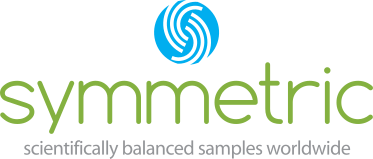- Call Us:
- 817-649-5243
- info@symmetricsampling.com
All Sample Sources Are Not Created Equal: How to Select the Right Sample Source
August 20, 2019
Panel and river samples have become very popular, and we are now seeing growth in panel aggregators. None of these sample sources are inherently good or bad, but it is important to understand their differences – and how to choose the best sample source for your project.
What's The Difference
- Panel Sample.Panels are databases of contactable survey respondents who have completed a rigorous registration process and have agreed to participate in survey research. A panel can be a general population or a specialty panels consisting of one or more types of lower-incidence populations, such as physicians, IT decision-makers, or people employed in the construction industry. Using a specialty panel can make recruiting respondents more efficient, although they are more expensive than general-population panels.
- River Sample.Also known as “Dynamically Sourced Sample”. River Sample respondents come into contact with a survey opportunity through digital marketing. The sample comes to you in a constant flow, which is why it is called river sample. Respondents are generally routed randomly to a survey opportunity.
- Aggregated Sample.Aggregators may or may not have a proprietary sample source, but they create a unique sample solution based on your study requirements by working with multiple sample sources to combine qualified respondents. Because aggregation can minimize some of the biases inherent in single-source panels, this method is becoming more popular with researchers. Additionally, aggregate sample can be a solution to very low-incidence-population surveys.
The Good and The Bad
| Panel Sample | River Sample | Aggregated Sample | |
|---|---|---|---|
PROS |
|
|
|
CONS |
|
|
|
Choosing the Right Sample Source: Key Questions
The key to choosing the right sample source is to understand the needs of your project. Are you looking for a very unique sample or respondents who typically do not participate in surveys? Or is your qualified respondent fairly ubiquitous in the population? Think about what is most important to your project: speed, replicability, a nationally representative sample, or cost? Here are key questions to ask your sample provider to make sure you’re getting the right sample for your project:
- How do you recruit and incentivize respondents?
- What registration process do you use to ensure respondent-identification accuracy and security?
- What variables are available on potential respondents?
- Will I be able to recontact my respondents should that become necessary in future research?
- What quality checks do you implement during fielding or after data collection to ensure high-quality data?
- How do you de-dupe respondents in the sample and then later post-data collection?
Understanding how your sample is sourced is the key to getting the right sample, and having the right sample is the key to data quality. Don’t assume that all samples are the same – they aren’t! And those differences can have a huge impact on the success – or failure – of your marketing research project.
Contact us to talk about your sampling needs: info@symmetricsampling.com
